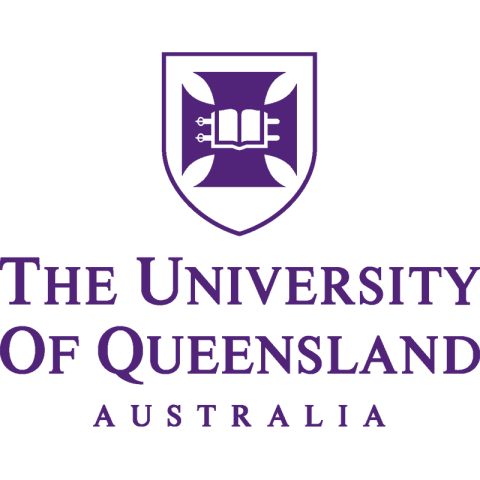
Learning to learn and higher-order thinking: it’s not just what to learn but how to learn
Students often enter higher education having been well supported and scaffolded in their formal school environments. However, this support may not have prepared learners to succeed in higher education, where students are required to self-regulate and engage in higher order thinking. Higher education learning experiences should not just involve helping students master content (the “what” of learning) but also give them knowledge and capabilities around “how” to learn.
In this fifth article in our series covering the seven principles in the Higher Education Learning Framework, we look at learning to learn and higher-order thinking in detail.
- Principle 1: Learning as becoming: what do students become as a result of their HE experience?
- Principle 2: Contextual learning: linking learning to the real world
- Principle 3: Emotions and learning: what role do emotions play in how and why students learn?
If students understand how they learn, they can improve the way they learn
The learning principle Learning to learn and higher-order thinking focuses on the awareness of thinking processes and learning strategies, when and how to use them, and when and how to evaluate their effectiveness. University students might not have the skills needed for successful independent learning. This introduces challenges where learners must quickly and sometimes unexpectedly develop learning strategies and capabilities for self-regulation to manage the demands of their studies.
Developing capabilities for self-regulated learning has powerful benefits for achievement, engagement and motivation. While some students develop effective learning skills on their own (or think that they do!), many don’t. The result can be the absence of effective learning strategies or the use of ineffective strategies, bringing about learning challenges.
Self-regulated learners can plan for, monitor and reflect upon their thinking, and emotional and motivational processes. They can evaluate the effectiveness and appropriateness of their learning strategies and adapt for improvement or apply them in different learning scenarios. Learning can be self-regulated or others can assist in co-regulation through relevant scaffolding and encouragement. Groups can socially regulate each another through shared goals and strategies for learning. In an online environment, the need to be self-regulated is even more essential because support from others may not be as present as it is in a physical classroom.
Developing the capability for self-regulation also enables students to access higher-order thinking skills such as creative and critical thinking, and to build confidence and learning dispositions that allow for academic and creative risk-taking, problem-solving, divergent thinking and innovation. Self-reflection is a way to engage higher-order thinking as students are shifting from passive to active engagement with their learning. It engages metacognition (that is, thinking about one’s thinking). In the educational context, metacognition encompasses thinking about how one learns, monitoring one’s learning strategies and thought processes throughout, and evaluating the effectiveness of these strategies and conditions in which one’s learning takes place.
7 ways to implement Learning to learn and higher-order thinking in higher education
- Assist students in planning for their learning for the semester. Ways to help include:
- providing clear learning and assessment information and point out key dates
- embedding effective learning strategies into the design and delivery of the course, and making these explicit to the students so that they can develop an understanding of which strategies are effective and when to use them
- encouraging students to set goals for their learning and draw on each another to monitor their progress with these goals.
- Provide opportunities for students to practise self-generated and socially shared regulatory skills. This is important in developing student beliefs about the importance and value of regulatory skills, and to enable their transfer into unfamiliar learning environments.
- Embed guided self-reflective tasks that encourage students to monitor their learning, motivation, emotions, strategy use and progress. In this way, students are supported with a structure to follow and are introduced to self-reflective practice.
- Use self-reflective practices to build metacognitive awareness and practice in students. Include open-ended, reflective questions throughout learning activities or assessment tied to themes in the course. For example, what learning strategies will you use to prepare for the mid-semester exam? Why do you believe these are effective? Were your learning strategies effective? How can you adapt these in the future?
- Encourage students to think about and challenge their thinking and assumptions. They can ask themselves or others questions such as: why do I/you think this? How can this be thought about in another way? How else can this be interpreted? What do other people think? Educators can model this type of thinking and share their own thought processes with students in the learning context.
- Promote creative and critical thinking in learning activities and assessment. Pose questions and problems that encourage divergent thinking and consideration of alternative explanations. This could look like learning with room for students to explore, experiment, collaborate, take risks and self-reflect. Tasks that present challenges to existing beliefs or ideas and that prompt impasses can be very effective in learning.
- Facilitate opportunities for students to self-regulate emotions related to learning. What emotions do they experience during learning? Are they beneficial or detrimental to their learning? Why?
Students can employ effective methods of thinking and improve the way they learn
Educators cannot assume learners have already developed effective learning strategies and the skills to apply, adapt, evaluate effectiveness and adapt again for their use in multiple contexts. Considered learning design that integrates opportunities for students to develop their self-regulation and metacognition, and to support their peers to also regulate their learning, provides a way for learners to develop higher-order thinking in any educational context.
Annemaree Carroll is head of the Science of Learning Research Centre Learning Lab; Stephanie MacMahon is programme director of the Learning Lab; Jason M. Lodge and Alexandra Osika are leading the Learning Lab’s work in higher education. The Science of Learning Research Centre Learning Lab, situated within the School of Education at the University of Queensland, brings together multidisciplinary researchers and interprofessional partners with the aim of transforming learning across the lifespan.
If you would like advice and insight from academics and university staff delivered direct to your inbox each week, sign up for the Campus newsletter.
Additional Links
Find more insight into Learning to learn and higher order learning and other evidence-informed principles for university learning in the Science of Learning Research Centre’s Higher Education Learning Framework (HELF).
The HELF synthesises existing educational frameworks, literature and research using a science of learning lens to produce seven principles for effective learning. These principles for learning can be used, built upon, adapted, tailored, and personalised to your unique teaching context.




